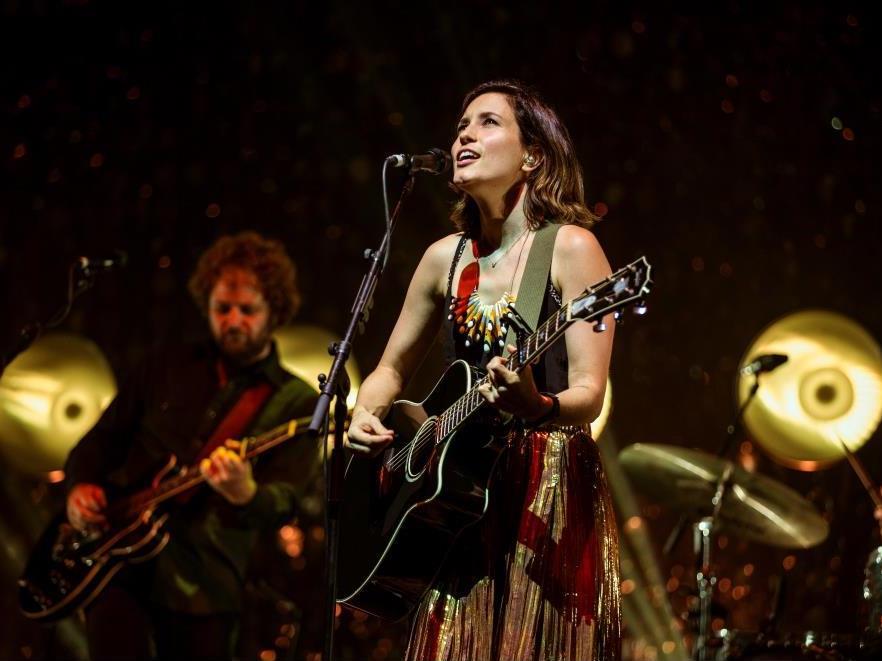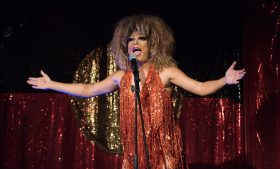Singer-songwriter Missy Higgins. Photo: Kane Hibberd.
Poverty and precarious work conditions are ongoing challenges for creators across all art forms.
The Australia Council’s 2017 report, Making Art Work: An Economic Study of Professional Artists in Australia, found that it’s increasingly difficult for artists to make a living from their work: the average total income for artists was 21% below the Australian workforce average, while the share of income from creative work has decreased substantially. The report also highlighted that global technological developments have increased audience expectations for free content as well as opportunities for misappropriation and exploitation that undercut artists’ livelihoods.
Ethical consumerism is just one part of the pie: as with sweatshop labour, animal cruelty, and environmental destruction, the issue of living wages for artists demands collective advocacy and systemic change. Nonetheless, putting a little thought into how you pay for art is a start.
ArtsHub spoke to Anne Blair, campaign manager (revenue) at APRA AMCOS, and Juliet Rogers, CEO of the Australian Society of Authors, for their advice on how you can support your fellow creators when you’re buying books and music.
The best way to buy books and music
Juliet Rogers: The best way to buy Australian books is in Australia, as authors receive a higher royalty in what is known as their ‘home market’. If you purchase from an American or English website, for instance, it is likely that the author will receive about 50% less royalty per copy sold.
It is also excellent if you can support your local bookshop, for a variety of reasons, but from the author’s perspective, they will once again earn their full royalty from sales made in independent bookstores. In contrast, big mixed-retail outlets may generate reduced author royalties because the outlet may well be buying at high discounts.
Related: Purveyors of culture: Why bookshops are a relationship
Anne Blair: The best way to buy (or listen to) music is from any legal source – streaming service subscriptions, as well as CDs, vinyl and radio, as well supporting live music performers by purchasing tickets from reputable ticketing outlets (not resellers)!
Why you should support Australian music and writing
Juliet Rogers: It is vital to support Australian writing because our writers are telling our stories. Their work reflects our diverse community, our sense of humour and the issues that are important to us. They help us develop our culture and build our identity and then take our voice so that it can be heard throughout the world. No one wants to see fewer Australian works published or a creative culture which is reliant on, and shaped by, overseas voices. We must celebrate our unique national contribution to world literature.
Also, Australian writing is often the building block for other art forms: look at the number of plays and films which are adapted from Australian novels.
Anne Blair: Australians love music. We’re the eighth largest market for recorded music in the world despite having much less than one per cent of the world’s people living on our shores. So supply and demand is one reason.
Another reason is to reward the star of our trade and cultural balance sheets. Australian music exports deliver substantial economic and cultural benefits to the nation, with approximately $195 million in annual export income. As the Born Global report says, ‘Exporting artists also share Australian stories, culture and perspectives with the world helping to build national identity and contributing to cultural diplomacy and Australia’s reputation on the world stage.’
Where your dollar goes
Rogers: Obviously the commercial terms between publisher and author vary, but the industry standard royalty for authors in Australia is 10% of the retail price, excluding GST for print books and 25% of net receipts for ebooks (defined as the revenue that a publisher makes when they sell an eBook, excluding GST). Smaller publishers struggle to pay at these rates.
As a rough overview, in an independent bookstore, the RRP would be divided as follows: 45% to bookseller, 45% to publisher, and 10% to author but this is a simplistic average and subject to variation.
It may appear as though publishers and booksellers are getting the lion’s share of the money, but the majority of the bookseller’s share is swallowed up in lease and staff costs and out of the publisher’s share of the money, they cover all the production costs of the book (editing, proofing, design and cover) and printing or eBook formatting. In addition, publishers sell to the retailer on a sale or return basis, so even though the retailer pays for the stock that they receive, they can obtain a full credit for any unsold books if they return them within an agreed period of time. Therefore, much of the stock risk rests with the publisher.
The reality is that publishing is dominated by a small number of best sellers that sell in very large volume and generate almost all the profit. The rest of the books either sell modestly well and deliver a small return to authors, booksellers and publishers or they fail to sell at the level anticipated and generate small royalties and minimal return, if any, to the booksellers and publishers.
We’re not expert in international terms, but in the UK and USA the print royalty of 10% of retail price is also fairly standard for hardback, although paperbacks attract a slightly lower royalty. The digital royalty of 25% of net receipts is fairly universal as a minimum.
Blair: Here’s how much artists actually make for different kinds of sales, from most lucrative to least:
- In terms of payments to artists, it may surprise you to know that a CD and a digital download are both worth more than a stream.
- As you would expect, subscription-based licensed streaming services (for example Apple Music, Spotify Premium) are worth more to artists than free-to-use/ad-funded licensed services (for example YouTube or Spotify free-access). The volume of streams in this free-to-use world are important as they, too, continue to earn royalties every single time they are played, although the per-stream rate is modest.
- By its nature, piracy of music means absolutely no money is returned to music creators. Playing music in a commercial setting without a licence or some other arrangement for permission also means absolutely no money is returned to music creators for this use.
How else you can support a living wage for your fellow creators
Rogers: The first and foremost way for people to support creators is for them to pay for the content that they consume. A creator’s only transactional asset is their copyright and they deserve to be fairly paid for the work that they have done to create the stories and/or illustrations that readers enjoy. Without this payment, they cannot continue to create, so purchasing legal copies of works by Australian creators, in Australia, is the single biggest contribution the public can make.
The second way is to engage in and support the advocacy work that is being done on behalf of creators. For instance, writers and illustrators receive a payment for every copy of their books that are held in a public library (PLR) or an educational library (ELR), which provides a very helpful small stream of income. This currently only applies to print books, however, not eBooks, yet the number of eBooks being held in libraries is increasing. The ASA is actively campaigning to have eBooks included in these two schemes.
Blair: A few things that you can do:
- Only shop/dine/work out at businesses who have a licence to play music.
- Only listen to legally obtained music and films.
- Pay for a music subscription service and downloading tracks.
- Attend live performances.
- Provide live performance opportunities for artists
Related: How to survive – physically and mentally – on an artist’s income





